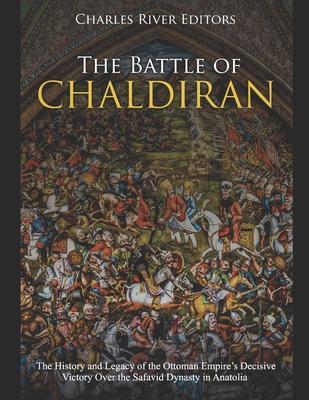The Battle of Chaldiran: The History and Legacy of the Ottoman Empire's Decisive Victory Over the Safavid Dynasty in Anatolia

The Battle of Chaldiran: The History and Legacy of the Ottoman Empire's Decisive Victory Over the Safavid Dynasty in Anatolia
*Includes a bibliography for further reading
The town of Caldiran (Chaldiran) in Turkey is home to about 60,000 people. On a plain close to the Iranian border, it it backdropped by the Armenian Ranges and very close to a Faultline, which has ensured it's suffered from seismic activity many times in the past. But in the early 16th century, it was the site of different kinds of faultlines, serving as a battleground between the region's two greatest powers as they clashed over politics and religion.
In the wake of taking Constantinople, the Ottoman Empire would spend the next few centuries expanding its size, power, and influence on the way to becoming one of the world's most important geopolitical players. It was a rise that would not truly start to wane until the 19th century, and while its most memorable conflicts were fought against the Europeans, the course of Ottoman history was greatly impacted by events against the other major Muslim power in its region: the Safavid Empire.
Naturally, the two powers quickly took up the geopolitical positions of the old Byzantine and Persian Empires in the time before Islam and fought over much of the same territory, including Mesopotamia, the Caucuses, today's eastern Turkey and the Persian Gulf. Their first battle was fought in 1514, their first real war was fought from 1532-1555, and they continued to spar regularly until the early 19th century, when European colonialism forced them both onto the defensive. Echoes of these conflicts can be seen in the recent sparring between Iran and Turkey through proxies in Iraq and Syria.
On August 23, 1514 the two sides clashed at Chaldiran in a contest for hegemony over the Middle East, and the results have affected the Middle East ever since. Regrettably, few concrete details of the actual battle survive, a not uncommon obstacle when studying battles from the Middle Ages. However, the course of the conflict can be reconstructed from the politics of the time, knowledge of the characters involved, the contemporary records are available, and what followed the battle.
There is no lasting monument to the battle in Chaldiran on site, but there is on the Iranian side of the border, nearly 20 miles to the east near the village of Gala Ashaki. It consists of a domed tomb for a Persian general, Sayyed Sharif-al-Din Ali Shirazi, who fell in the battle. He was the chief religious cleric of Shah Ismail I, the first of the Safavid rulers of Persia and
PRP: 86.34 Lei
Acesta este Pretul Recomandat de Producator. Pretul de vanzare al produsului este afisat mai jos.
77.71Lei
77.71Lei
86.34 LeiLivrare in 2-4 saptamani
Descrierea produsului
*Includes a bibliography for further reading
The town of Caldiran (Chaldiran) in Turkey is home to about 60,000 people. On a plain close to the Iranian border, it it backdropped by the Armenian Ranges and very close to a Faultline, which has ensured it's suffered from seismic activity many times in the past. But in the early 16th century, it was the site of different kinds of faultlines, serving as a battleground between the region's two greatest powers as they clashed over politics and religion.
In the wake of taking Constantinople, the Ottoman Empire would spend the next few centuries expanding its size, power, and influence on the way to becoming one of the world's most important geopolitical players. It was a rise that would not truly start to wane until the 19th century, and while its most memorable conflicts were fought against the Europeans, the course of Ottoman history was greatly impacted by events against the other major Muslim power in its region: the Safavid Empire.
Naturally, the two powers quickly took up the geopolitical positions of the old Byzantine and Persian Empires in the time before Islam and fought over much of the same territory, including Mesopotamia, the Caucuses, today's eastern Turkey and the Persian Gulf. Their first battle was fought in 1514, their first real war was fought from 1532-1555, and they continued to spar regularly until the early 19th century, when European colonialism forced them both onto the defensive. Echoes of these conflicts can be seen in the recent sparring between Iran and Turkey through proxies in Iraq and Syria.
On August 23, 1514 the two sides clashed at Chaldiran in a contest for hegemony over the Middle East, and the results have affected the Middle East ever since. Regrettably, few concrete details of the actual battle survive, a not uncommon obstacle when studying battles from the Middle Ages. However, the course of the conflict can be reconstructed from the politics of the time, knowledge of the characters involved, the contemporary records are available, and what followed the battle.
There is no lasting monument to the battle in Chaldiran on site, but there is on the Iranian side of the border, nearly 20 miles to the east near the village of Gala Ashaki. It consists of a domed tomb for a Persian general, Sayyed Sharif-al-Din Ali Shirazi, who fell in the battle. He was the chief religious cleric of Shah Ismail I, the first of the Safavid rulers of Persia and
Detaliile produsului








